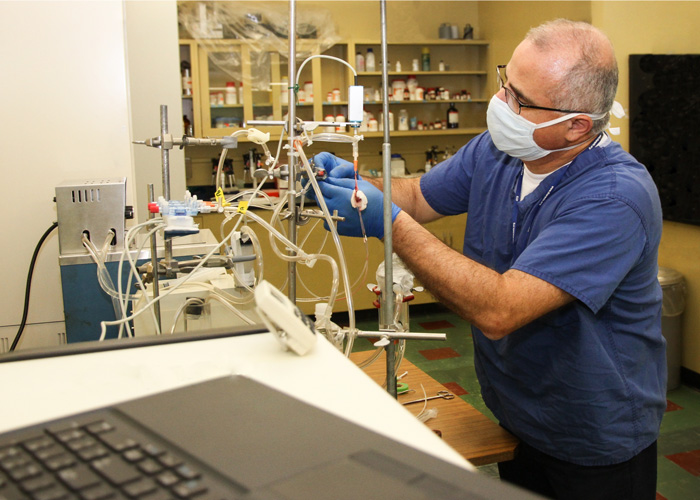Dr. Jason Bazil is an Assistant Professor in the Department of Physiology and BioMolecular Science Gateway at Michigan State University. His lab is focused on exploring the dynamics of cardiac energy and its response to heart disease, as well as ischemia/reperfusion injury.
Learn more about Dr. Bazil
Calcium Effects on Mitochondrial Ultrastructural
Mitochondrial calcium homeostasis has been of great interest to many scientific communities. This is because mitochondria respond to calcium in a manner that can either promote health or cause disease. The orthodox view is that calcium stimulates energy metabolism through a variety of mechanisms if kept below toxic levels. When mitochondrial calcium levels get too high, a phenomenon known as mitochondrial permeability transition occurs which turns mitochondria from ATP producers into ATP consumers. However, before this transition event occurs, mitochondria store excess calcium as calcium phosphate precipitates of heterogeneous composition. In this calcium overloaded state, mitochondria remain intact and functional, albeit with reduced oxidative capacity, and reveal dramatically altered cristae morphologies when imaged with cryo-electron tomography. We show that calcium phosphate precipitates appear to modulate isolated mitochondrial membrane morphology and depress ADP-stimulated respiration which implies a link between structure and function. From these results, a new model of mitochondrial operation is coming into focus, and a testable hypothesis emerges. In this model, cristae junctions play a key role in energy homeostasis, and as a corollary, maintaining cristae junction integrity preserves mitochondrial oxidative capacity. Overall, these findings establish a mechanism of calcium-induced mitochondrial dysfunction which may be causal in many diseases. Thus, new emerging therapeutics that maintain cristae structure and integrity may translate into preserved or enhanced mitochondrial function during stress.


